Lithuanian Melancholy
October 21, 2019 Photography Lithuania Soviet Union Antanas Sutkus Romualdas Rakauskas Vitas Luckus
During Soviet rule, photographers from the small Baltic nation carved out their very own genre of photography. It was a look at the transformations of their country—and a quiet act of resistance.
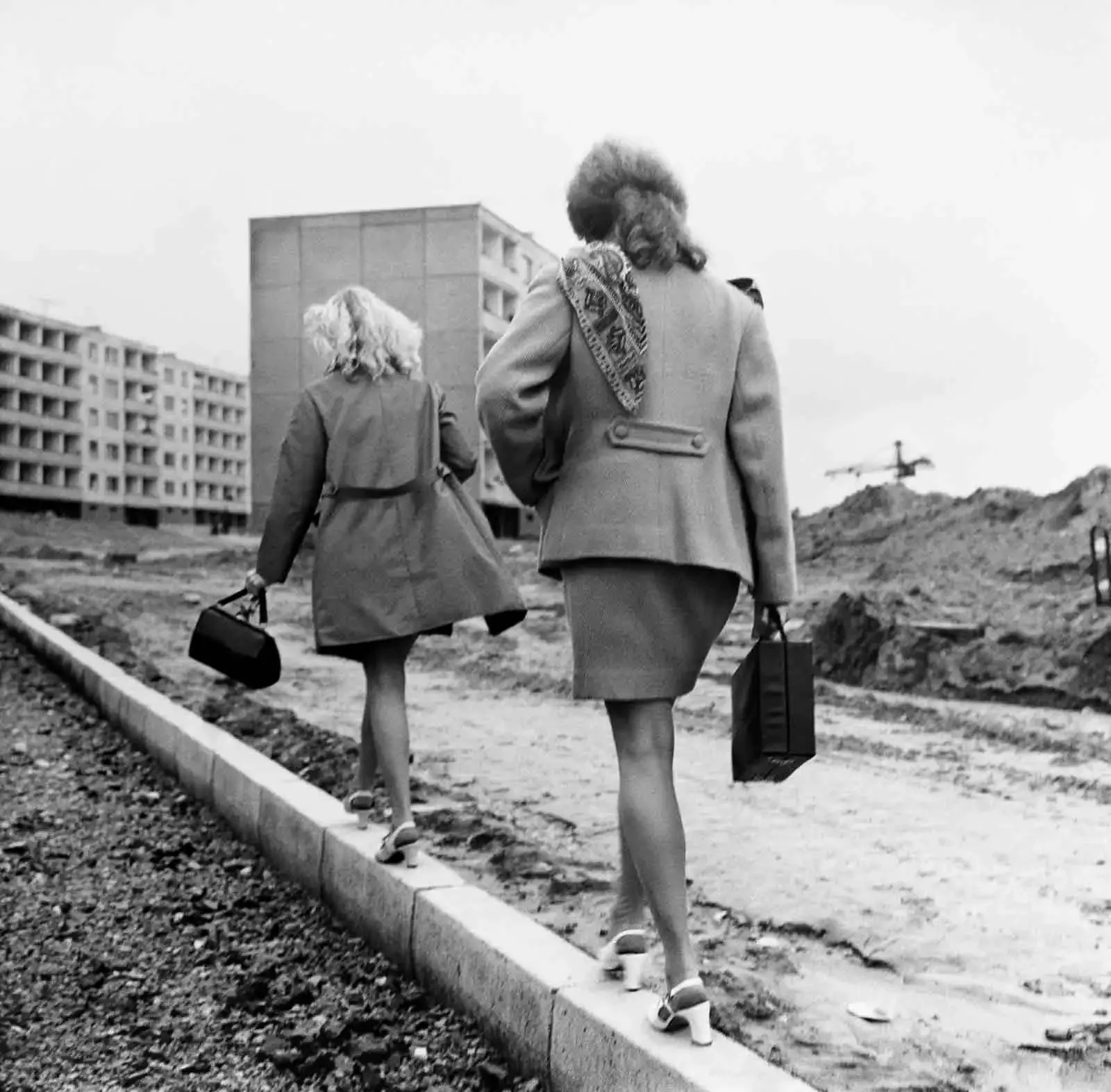 Atanas Sutkus: Lazdynai. Pavement. Vilnius, 1976
Atanas Sutkus: Lazdynai. Pavement. Vilnius, 1976
Two years ago, browsing a photo book fair in Amsterdam, I came upon a stand of the Kaunas Art Gallery from Lithuania. I knew nothing about the gallery and very little about Lithuania, but the stand and the photo books immediately captured my attention.
As opposed the contemporary works on the display elsewhere, the books I saw were full of historic photos, some reaching back into the 1960s. All of them shared a pronounced style: They were shot on black and white 35mm film but developed to have a low contrast that brought out a remarkable palette of grey tones.
An Extraordinary Amount of Feeling
Although they had been taken by several photographers across many years, the photos fit perfectly together: The compositions were rigid, the focus sharp, and even chaotic street scenes perfectly ordered in the frame.
Despite of that rigidity, the pictures evoked an extraordinary amount of feeling, especially a revealing sense of melancholy. That strict composition gave them the effect of an extremely well-composed poem where every last word hits home.
I spent almost an hour at that stand, diving into different books and catching revealing glimpses of life in this Eastern European country and its past: Kids playing on muddy streets, old women riding on the back of farm vehicles, workers smoking and drinking in their homes. Appropriately, the collection of pictures I ended up buying was titled “Daily Life”.
Style and Tight Control
When I got home and researched the names of the photographers, it turned out that their works make up what’s known as the “Lithuanian School”: A specific style carved out by young photographers back when their country was under tight control from Moscow.
The political conditions at the time are manifest in the photos: Postwar Lithuania—liberated from Nazi occupation by the Red Army, only to be swallowed up by the Soviet Union as the Lithuanian SSR—was undergoing drastic changes as it was being transformed from an agrarian state into an industrial planned economy.
Uprooting as that was, this transformation supplied photographers with plenty of subjects: Rapidly disappearing traditions, increasing urbanization, and the changing nature of rural life.
Quiet Acts of Resistance
We can see this change in the photography of Antanas Sutkus, who co-founded the Lithuanian Association of Art Photographers and remains the towering figures of the Lithuanian School.
A journalist by training, Sutkus quit writing and started taking pictures when he became disillusioned by the limited press freedom in his country. His seminal series “People of Lithuania” documented the lives of everyday people in his country. Though they show normal people doing normal things, the photos are honest, raw, and often revealing.
Today, that realism is considered a quiet act of resistance against Soviet rule. Realism was an effective protest against the sanitized image of the Soviet citizen and the workers paradise that was championed by Moscow.
In theory, photographers had more freedom than journalists—they could pick the subjects they wanted and travel around their region to shoot. But photographer Vitas Luckus, a contemporary and acquaintance of Sutkus, quickly found out that his freedom and protest had a limit: He had a run-in with the KGB when he took a leave from his military service to see a photo exhibition in St. Petersburg. And whenever he pushed the limits of documentary photography with particularly revealing realism, nudes, or collages, galleries would refuse to show his work.
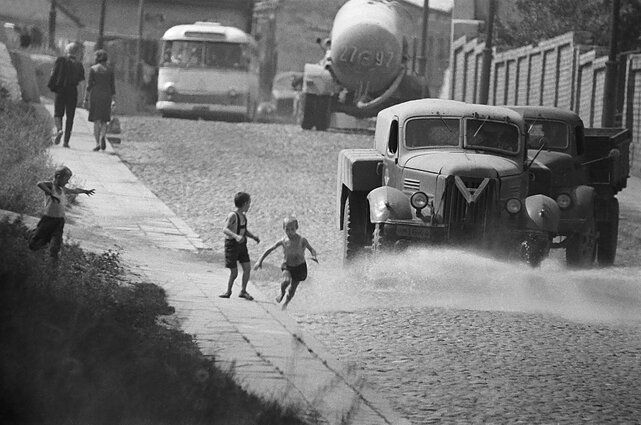
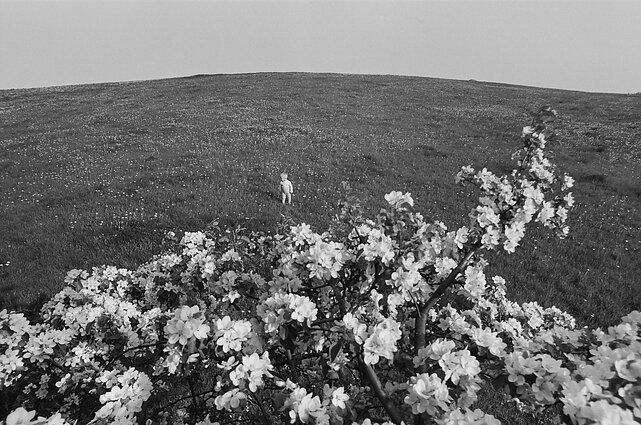
This might have been the reason why Romualdas Rakauskas, another famous member of the “School” took a different approach and showed a more dreamy reality than those of Sutkus and Luckus: His photos sometimes seem like that of a fairytale with their blossoming trees and dancing children, but that makes them all the more nostalgic for a past that was rapidly disappearing.
These photographers, constrained as they were, created something new and unique: They took the style of humanist photographers and refracted it through a local lens, combining reportage with an empathetic look at the circumstances of their time. These weren’t outsiders investigating a country but people from that very region, revealing it to anyone who cared to look.
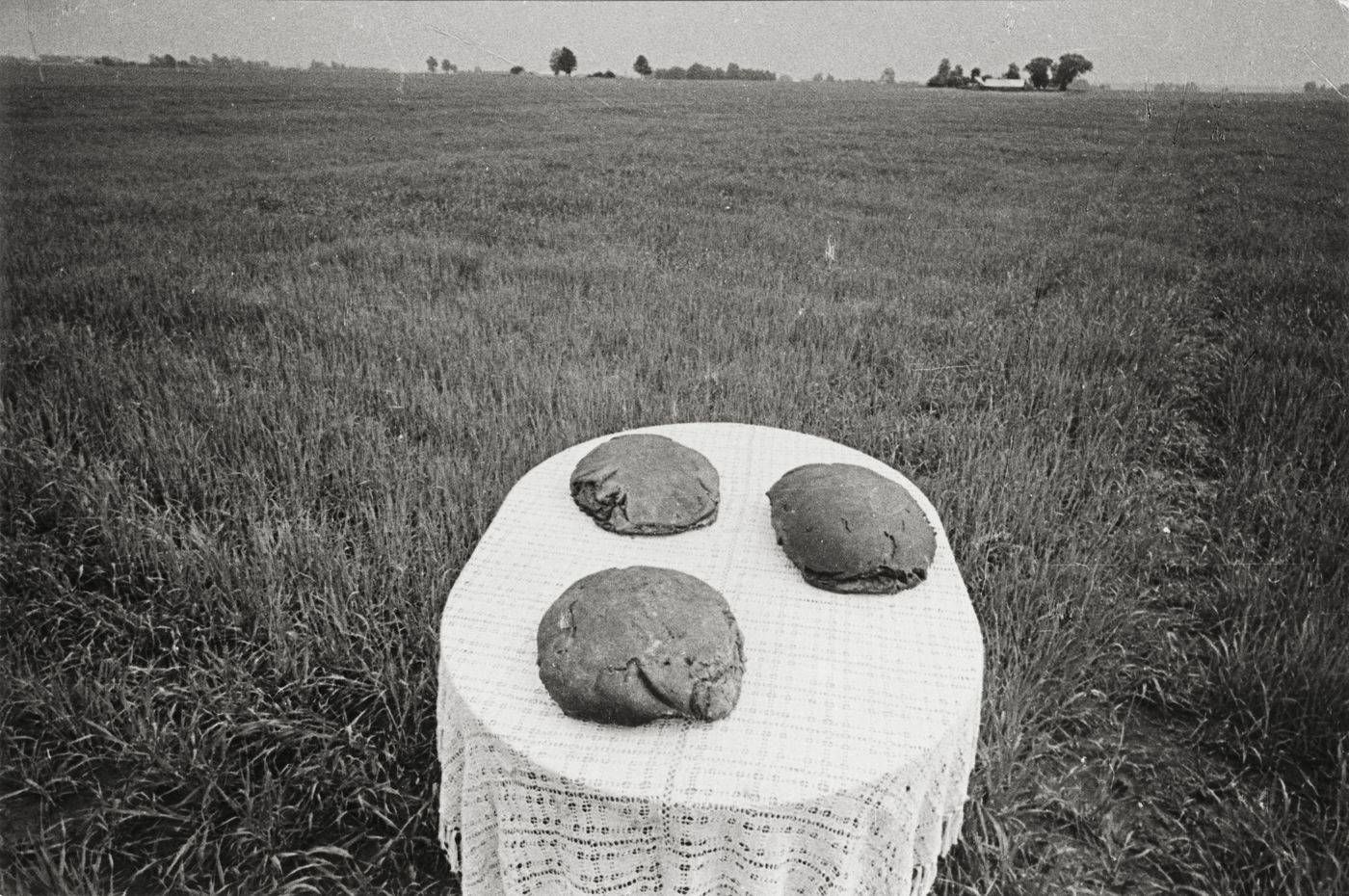 Romualdas Rakauskas. Duona. 1971
Romualdas Rakauskas. Duona. 1971
Their vision was celebrated even at the time: Rather tellingly, the term “Lithuanian School” was coined by two Russian art critics at the occasion of the style’s most important exhibit, “9 Lithuanian photographers”, held in Moscow in 1969.
Style as a Corset
It’s important to point out that the term “School” didn’t refer to an educational institution: There was no formal photographic training available in Lithuania at the time, so photographers had self-taught. Instead, the name was a sleight of hand: Calling it the country’s school seemed much more inclusive than the country’s style, which reeked of nationalism or other-ness at a time of prescribed collectivism.
In retrospect, the style might also have been a bit of a corset: Its rigidity defined boundaries within which photographers could explore their unique visions, deal out subtle criticism, and largely avoid political consequences.
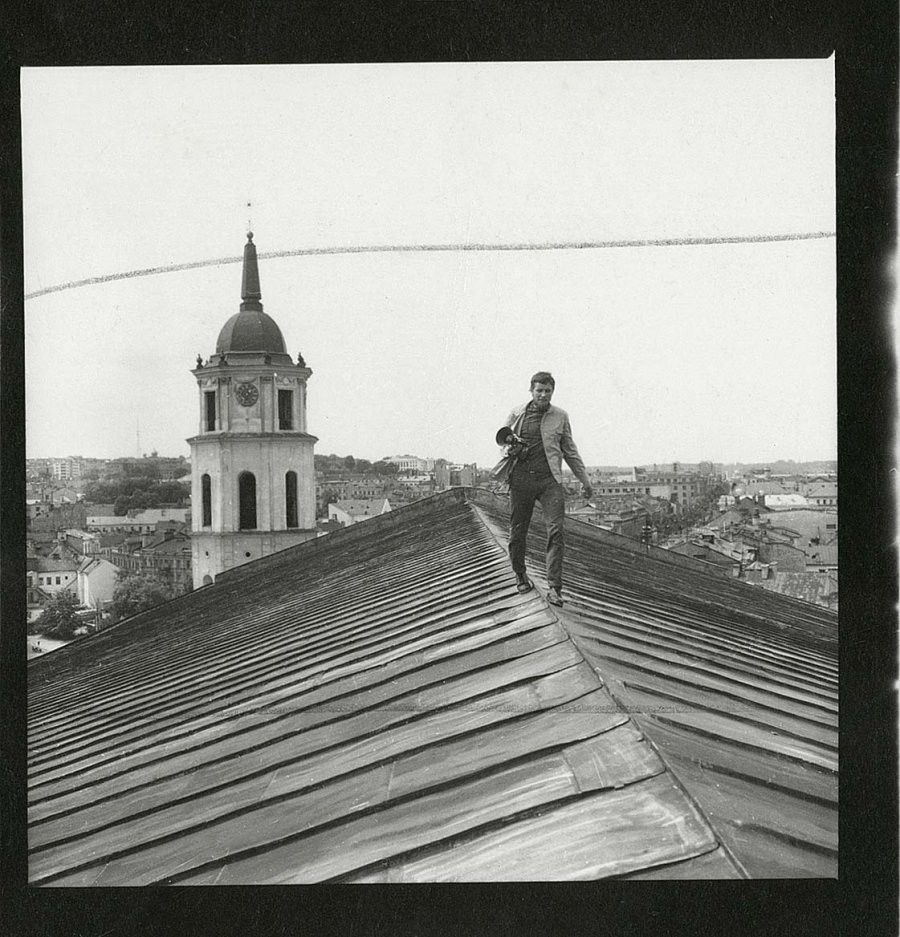 Vitas Luckus
Vitas Luckus
Striking that balance was all too important: Vitas Luckus, the most rebellious photographer of his time, committed a tragic suicide in 1987. He jumped out of his top floor apartment window after getting into a fight with an acquaintance who had turned out to be a KGB agent investigating him. The fight had got out of hand, Luckus had stabbed and killed the acquaintance, only to realize the drastic implications of the murder.
Today, he is but a subplot in the story of Lithuanian photography, but an important reminder of the powers at play when they developed their style.